 |
 |
 |
 |
 |
 |
| |
 |
|
 |
 |
 |
  |
  |
 |
 |
 |
 |
|
 |
|
 |
 |
 |
NOTE BIOGRAFICHE |
 |
|  |
|
 |
 |
 |
| |
 |
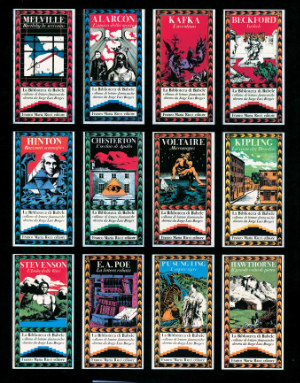 La fondazione Franco Maria Ricci si propone questi compiti: la conservazione dei libri e della collezione d’arte di Franco Maria Ricci, la promozione delle attività culturali del Labirinto e il restauro del paesaggio.
“I compiti principali della fondazione sono due: il primo, quello di conservare i miei libri e la mia collezione d’arte, promuovere le (numerose) attività culturali del Labirinto, per quanto possibile mantenendo fede all’ispirazione originaria. Il secondo, cui tengo moltissimo, è di carattere paesaggistico e botanico: si tratta del restauro del paesaggio padano.
Durante la mia vita ho visto, con tristezza, degradarsi i luoghi della mia gioventù.
Erano i tempi in cui mi spostavo di continuo tra Parma e Milano, lungo l’Autostrada del Sole appena inaugurata; ai lati scorreva una pianura pingue, pulita, ricca di colture erbacee, di casali, di fienili, di borghi visibili in lontananza, di nebbie e di brine.
La dolcezza del paesaggio, la bellezza delle albe e dei tramonti contribuivano, credo, alla mia felicità.
Oggi, ogni volta che ripercorro lo stesso asse viario, vedo sfilare tristemente e senza interruzioni il retro di disadorni capannoni industriali, con cumuli di detriti, di apparecchiature in disuso, di macchinari sfasciati, d’immondizie e cascami industriali.
So che quegli edifici offrono molte occasioni di lavoro e di benessere: non possono certo essere eliminati, ma mi chiedo se non si possa in qualche modo ovviare agli inconvenienti legati al loro aspetto ingrato.
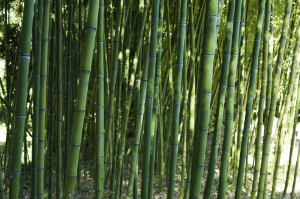 La risposta è Sì, ed è legata a un mio amore tardivo: quello per il bambù.
La pianta tradizionale dei labirinti è il bosso; anch’io forse l’avrei usato, se fossi stato più giovane; ma il bosso cresce lentamente, mentre il bambù è velocissimo.
L’età mi ha fatto innamorare di questa pianta meravigliosa, che è uno dei molti doni dell’Oriente (e oggi anche il nome di uno dei miei cani).
Se i bambù (il mio parco ne conta venticinque specie diverse) sono cresciuti così rigogliosi è forse perché respirano bene, a poca distanza da un fiume il cui nome profuma di Cina: il Po.
Si tratta di una pianta straordinaria, che non si ammala, non si spoglia d’inverno, a causa della sua impaziente crescita assorbe grandi quantità di anidride carbonica lasciando a noi l’ossigeno (protocollo di Kyoto) e non provoca disastri a causa di tifoni o trombe d’aria (nessuno è mai morto perché gli era caduto addosso un tronco di bambù).
Spero che, fra qualche anno, questa pianta diventi un elemento importante del paesaggio padano, e che i nostri imprenditori accettino di mascherare i loro capannoni con le delicate cortine verdi delle mie canne. Cambiare il volto della Val Padana, restituendole una grazia perduta, è oggi il più ambizioso dei miei sogni. La Fondazione fornirà le piante necessarie e un servizio di consulenza gratuita.
Il costo dell’operazione è trascurabile, cento piante di bambù non costano più di 2000 euro e si sviluppano senza difficoltà.” |
|
 |
 |
 |
SAGGI E ARTICOLI |
 |
|
 |
|
 |
 |
 |
| |
 |
La Collezione FMR
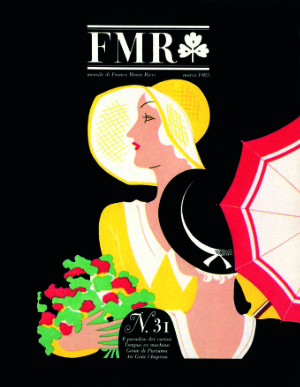 Eclettica e curiosa, la collezione d’arte rispecchia il gusto di Franco Maria Ricci. Si va dalla grande scultura del ’600 a quella neoclassica, da nature morte con teschi a busti e ritratti dell’epoca di Napoleone, dalla pittura romantica e popolare dell’800 alle eleganze di epoca Déco, artisti dallo stile forte coabitano con altri, interpreti minori ma fedeli delle forme di una Civiltà. Eclettica e curiosa, la collezione d’arte rispecchia il gusto di Franco Maria Ricci. Si va dalla grande scultura del ’600 a quella neoclassica, da nature morte con teschi a busti e ritratti dell’epoca di Napoleone, dalla pittura romantica e popolare dell’800 alle eleganze di epoca Déco, artisti dallo stile forte coabitano con altri, interpreti minori ma fedeli delle forme di una Civiltà.
“Cerco di guardarla come se non l’avessi mai vista, è una sorta di Wunderkammer che, inevitabilmente, rispecchia me stesso, il mio gusto e indirettamente, attraverso certe assenze, i miei rifiuti.
Opere di grandi artisti coabitano con altre di artisti minori o popolari.
Qua e là si formano addensamenti intorno a un periodo, a un genere, a una sensibilità.
Molte le sculture riferibili al Settecento e all’Impero: opere di Houdon, Lemoyne, Caffiéri, Boudard, Collot, Chinard, tutti artisti dell’era dei Lumi... poi, quando il neoclassico entra nell’orbita napoleonica (quindi bodoniana), ecco i busti della brulicante famiglia Bonaparte, firmati Bosio, Bartolini, Ceracchi, Fontana, Thorvaldsen, Chaudet...
Un passo indietro, nel tempo: all’ottimismo rivoluzionario e alle glorie napoleoniche fanno da controcanto le mie Vanitas, nature morte con teschio, spesso granghignolesche, qualche volta opera di artisti famosi, come Jacopo Ligozzi.
Non mancano i manieristi (Ludovico Carracci, Girolamo Mazzola Bedoli, Luca Cambiaso...), né la grande scultura del Seicento (Bernini, Foggini, Merlini...), né artisti legati agli anni d’oro del ducato di Parma (Julien de Parme, Boudard, Baldrighi, Ferrari, Petitot...), né la pittura romantica e popolare dell’Ottocento (Hayez, il Piccio, Fabris...).
Infine, a documentare i miei accostamenti al Novecento, le opere di Adolfo Wildt, di Ligabue, di Libero Andreotti, di Corcos, di Savinio, di Erté, o le cosiddette crisoelefantine, piccole statue da salotto di Chiparus e di altri artisti Déco...
È la mia collezione.
Ne ho sorvegliato l’allestimento: non sarà quello casuale di una quadreria, né quello scientifico di un Museo; procederà per associazioni (d’idee e di forme), e non si asterrà dal sottolineare i parallelismi che esistono tra le mie scelte editoriali e quelle di collezionista.”
BODONI
Il colpo di fulmine tra FMR e Bodoni avviene nel 1963, quando Ricci scoprì l’opera del grande Tipografo e il suo sublime Manuale Tipografico. Da lì la decisione di intraprendere la professione di editore e di riprendere l’utilizzo esclusivo dei caratteri bodoniani, ispirandosi costantemente all’estetica aristocratica del sommo tipografo neoclassico.
Ricci ha fatto suo un motto bodoniano: Je ne veux que du magnifique et je ne travaille pas pour le vulgaire.
Nel giro di pochi mesi ristampa in facsimile i due tomi del Manuale del 1818, aggiungendone un terzo di storico e filologico commento.
Nessuno come FMR ha portato il nome e l’opera di Bodoni alla conoscenza più diffusa; lo ha fatto soprattutto col costante uso dei suoi caratteri, nei libri, nelle riviste, nei cataloghi, nelle pubblicità, nei dépliants, nelle cedole librarie della casa editrice che stava per nascere.
Ma l’amour fou per Bodoni e ben evidente in Ricci anche nell’ardore collezionistico. La sua raccolta bodoniana sta diventando la più ampia, la più scelta, la più ricca di rarità del nostro tempo, seconda solo alle irraggiungibili collezioni storiche, nate già con Bodoni vivente. Ma numerosi volumi e fogli volanti di queste collezioni sono già confluiti nella sua.
“Nel 1965, dopo due anni di preparazione e lavoro, pubblicai il mio primo libro: il Manuale Tipografico di Bodoni, due volumi in facsimile più un terzo di studio.
Perché scelsi Bodoni? Soprattutto per amore e interesse in un aspetto della cultura, la grafica, che al limite fra arte e industria, ha in lui un operatore fondamentale, l’esempio più importante di quanto essa sia soprattutto fatto d’arte e di pensiero. Credo che Bodoni vada riscoperto con l’occhio d’oggi, reso attento e smaliziato dalle recenti esperienze visuali.
Diverse correnti del secolo scorso, dalla Pop-art in poi, hanno in comune con il neoclassico Bodoni un’idea, il desiderio del segno di superare la sua funzione originaria, di liberarsi del normale contesto per vivere in una dimensione autonoma e fantastica che solo la cultura rende possibile. A Bodoni importava dipingere con l’alfabeto, creare emozione con quattro lettere su bianco, tanto bianco, della pagina. La sua missione non era propagandare la cultura e i testi delle sue edizioni, bensì inventare quell’arte che oggi esiste ma che prima di lui non c’era: il graphic design.
Fino a oggi i tipografi hanno sempre sentito Giambattista Bodoni come il più santo tra loro, e le sue effigi appese in talune officine sembrano i corrispondente delle icone di San Giuseppe presso le falegnamerie. La cultura ufficiale invece, lo ha avvicinato con superficialità e presunzione: un bravissimo artigiano, un re della categoria, un personaggio degno di essere ricordato, ma raramente un vero e proprio artista, capace di aver pensato, sentito e operato scelte importanti nel dominio libero ed extratemporale dell’arte. Solo da pochi anni la critica si è interessata maggiormente alle arti applicate, al disegno industriale e a quelle esperienze che hanno finalità di consumo, come quella bodoniana, o utilizzano elementi del quotidiano.” |
|
 |
 |
 |
OPERE |
 |
|
 |
|
 |
 |
 |
|
|
 |
|
 |
 |
 |
 |
BIBLIOGRAFIA |
 |
|
|
 |
|
 |
 |
 |
| SCRITTI DELL'AUTORE |
 |
|
|
 |
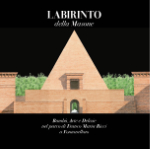 Franco M. Ricci, Vittorio Sgarbi, Corrado Mingardi, Giovanni Mariotti, Antonio Fernàndez Ferrer, Labirinto della Masone. Arte e Delizie nel parco di Franco Maria Ricci a Fontanellato, Ricci Editore, Fontanellato (Parma) 2014 Franco M. Ricci, Vittorio Sgarbi, Corrado Mingardi, Giovanni Mariotti, Antonio Fernàndez Ferrer, Labirinto della Masone. Arte e Delizie nel parco di Franco Maria Ricci a Fontanellato, Ricci Editore, Fontanellato (Parma) 2014 |
|
|
|
 |
 |
 |
 |
MOSTRE |
 |
|
|
 |
|
 |
 |
 |
|
|
 |
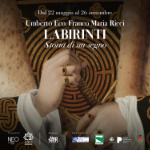 Umberto Eco, Franco Maria Ricci. Labirinti. Storia di un segno, Casalbarbato, Parma (Italy), Labirinto della Masone, 22 may 2021 / 20 march 2022 Umberto Eco, Franco Maria Ricci. Labirinti. Storia di un segno, Casalbarbato, Parma (Italy), Labirinto della Masone, 22 may 2021 / 20 march 2022 |
|
 |
 |
 |
CREDITS |
 |
|
 |
|
 |
 |
 |
| |
 |
Photo © Massimo Listri, Marco Campanini, Archivio Franco Maria Ricci
Courtesy of Archivio Franco Maria Ricci |
|
 |
  |
 |
|
|